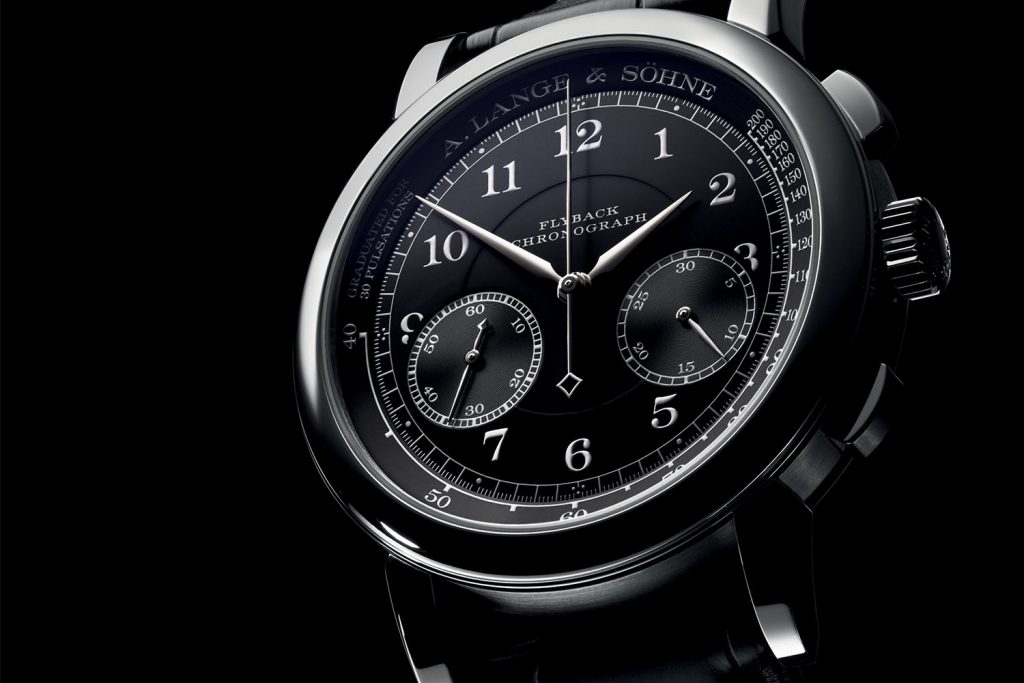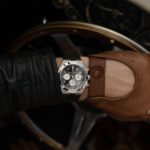By Jovan Krstevski
If you noticed already, the A. Lange & Söhne 1815 line of watches is named after the year of birth of Ferdinand A. Lange, the brand’s founder. This collection is meant to be reminiscent of classic design and traditional watchmaking techniques and was first introduced back in 2004. Later on it saw updates on its movement in 2010. If you also know the Datograph which is important for this write-up as the 1815 Chronograph borrows some noticeable features only present with the former watch.
The 1815 Chronograph uses a 39.5 mm white gold case and very thin at almost 11 mm. At this size, you are certainly thinking of using it for dressy occasions however its design is meant to be sporty too. It is smaller than the Datograph and far more comfortable to wear. The case sports a nice 3-part build with polished top bezel and lugs, brushed sides, and a screwed-down concave rear bezel holding the sapphire crystal in place. Its smooth lines and clean finish make it very appealing and valuable. I also love the simple fluted crown and rectangular pushers.
On the dial side, this is where the big change happens. The 1815 Chronograph line features up to this point only white or silvered dial as for the new 1815 Chronograph, we get a jet black piece of solid silver for the dial. This is only available with the Datograph but oh well, it is a nice change but not so nice if you hear me a bit. A. Lange & Söhne decided to use polished rhodium-plated hands instead of the heat-blued hands which are in my opinion a better combination. A sheer black on white is boring but with pastels added, it simply becomes utilitarian or just common.
The 1815 Chronograph also uses hour markers painted directly on the dial however, I really would love the applied ones seen on the Datograph. Well, we do get more on the dial design which sports a 2-sub-dial configuration with running seconds at 9 o’clock and a 30-minute counter at 3 o’clock. Another interesting update to the watch is the use of a pulsometer scale which is used to measure heart beat which comes in handy after parties.
On the power side, the 1815 Chronograph uses the Caliber 1951.5, a manually wound movement with a column wheel flyback chronograph. The thin aspect of the watch is the result of Lange removing the date and power reserve complication of the movement plus it also results to a full 60 hours of power reserve. The movement sports a usual Lange fashion, expect beautiful finishing and solid build. The exhibition caseback which is made of sapphire crystal showcases ample amounts of chamfering, engraving, polishing, heat bluing, and Lange’s signature gold chatons. The eye candies are more than enough to please anyone with the fascination with fine mechanical watches.
Of course, the 1815 Chronograph sits on a comfortable leather on top of your wrist but its selling point is its price which is a lot lower than its big brother the Datograph but sports identical features of the latter.
For more info, please visit alange-soehne.com







